Before joining Luma Pictures in 2003, Vincent Cirelli worked at Stan Winston Studios as technical director. At Luma, he oversaw movies such as NO COUNTRY FOR OLD MEN, HANCOCK, HARRY POTTER AND THE HALF-BLOOD PRINCE or WOLVERINE.
How was the collaboration with director Michel Gondry and production visual effects supervisor Jamie Dixon?
Payam Shohadai (Executive Visual Effects Supervisor) // Michel Gondry is an incredibly creative director that we were very excited to work with, especially on this genre of movie. Trying to make the impossible possible was a fun challenge that we all accepted with open arms. Jamie Dixon was creative and flexible and because of his facility side experience, we felt like he was very accommodating to our needs.
What are the sequences made by Luma Pictures?
Steven Swanson (Senior Visual Effects Producer) // Luma worked on a variety of shots, many centered around Black Beauty as a CG replacement. Given it’s an action film, this is a car that needed to do things a typical car would never do, so they enlisted our help for these sequences. Black Beauty needed to crash through plate glass out of the top of a 20 story building while the camera follows the people in the car on the way down. The actors were then ejected from the car with parachutes, all shot on green screen. This meant background had to be replaced as the camera follows them float to the ground with various coverage and angles of building and debris behind them. There were many shots of damage, Black Beauty also drives through an office space, knocking things over and crashing through walls, with people diving out of the way. This also required wire removal for the stunt men. We also added numerous muzzle flashes, smoke screens, explosions and heavy compositing. There is an action sequence where Kato is fighting some hooligans, and shatters a car windshield with a pipe. The glass coming out was in two or three shots were in stereo, where the glass actually appeared to be coming out of the screen and onto the audience. Pretty good shock factor.
 |
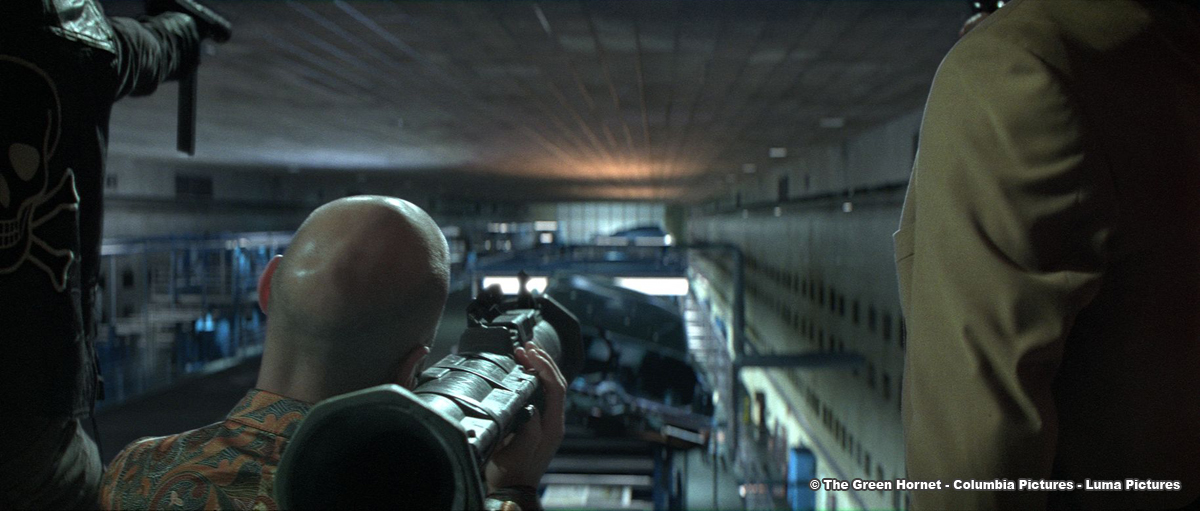 |
Can you explain how you’ve recreated the Black Beauty in CG?
Vincent Cirelli (Visual Effects Supervisor) // We used a Lidar scan of one of the many practical Black Beauties used for the film as a starting point for scale and part placement reference. Then the car was completely recreated in Maya starting from a cube and ending with a super cool muscle car, souped up with everything from giant gatling guns that pop out of the hood, to rockets that shoot out from behind the headlights, and for some of the later versions, riddled with bullet holes and even cut in half.
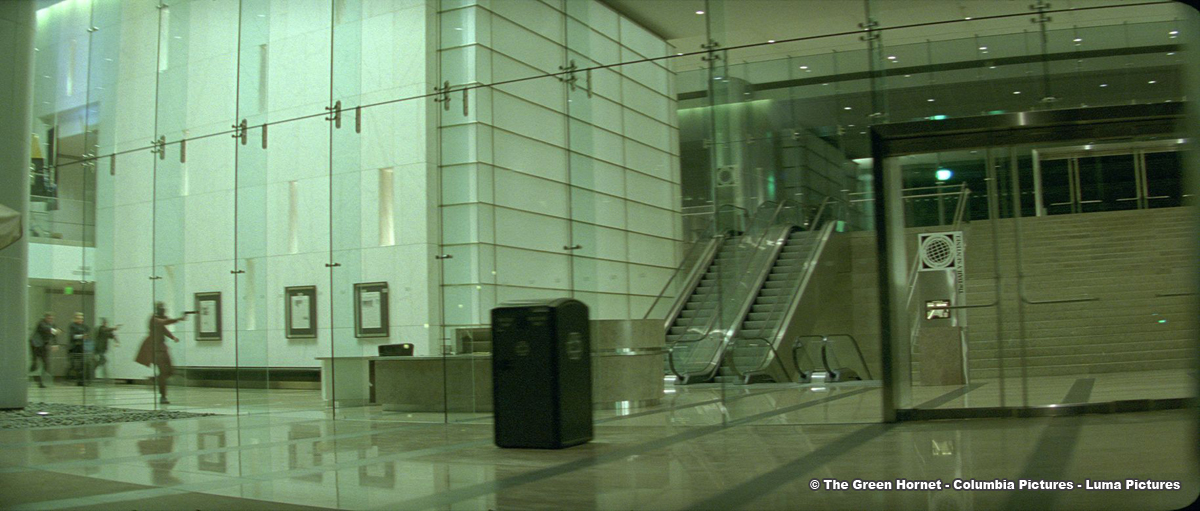 |
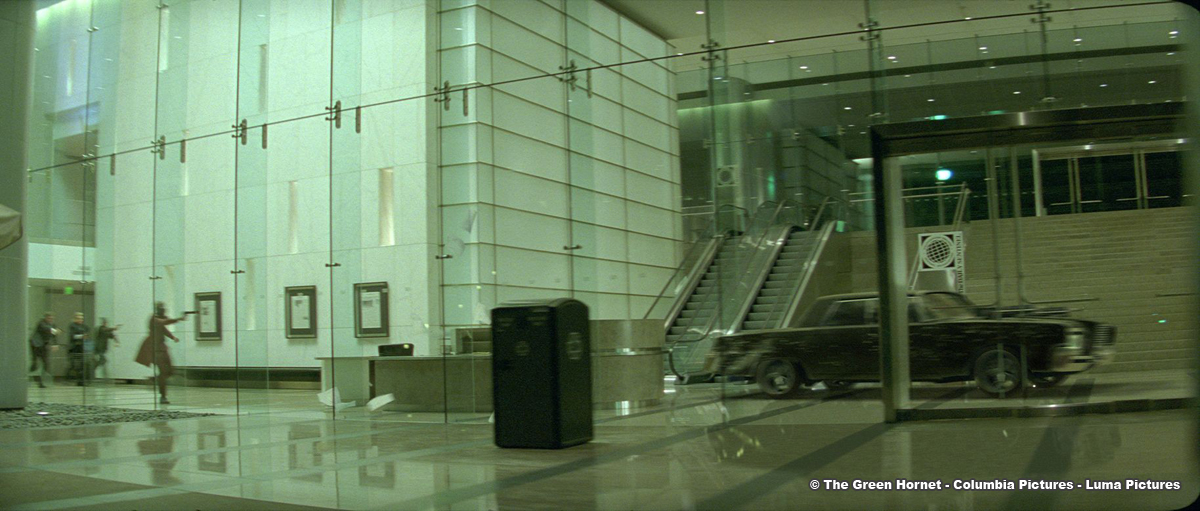 |
Are you involved on the great shot where an old car turns on itself to be replaced by the Black Beauty?
Richard Sutherland (CG Supervisor) // That shot was one of the most challenging of the film because not only did we have to replace one car, but two, very close to camera. The length of the shot also played a role because the audience had plenty of time to observe and dissect the realism of the cars. And not only that, but at the end of the shot, Brit and Kato had to look at it, interact with it, open the doors, and get into the fully CG car all while it completely reflected the onset lighting and pushed complete realism.
Can you tell us about the shooting of the sequence when the Black Beauty is falling on the printing press? How did you create these shots?
Justin Johnson (Digital FX Supervisor) // They shot the car on green screen. It was rigged and flying through the air above the printing press to have it lined up to look as though it was about to land on it. At this point, we took over and recreated the car digitally; recreating all the damage, smoke, and sparks. It then blended it in with the live action shot of the car hitting the ground. All the texture and lighting also had to match up with the live action plates that were shot at the printing press in downtown LA.
We ended up building out the entire room digitally, each section was duplicated down the length of the room and lit based on reference of the printing press at the LA Times. We actually took several trips to LA Times and shot reference there and used it to match the digital version.
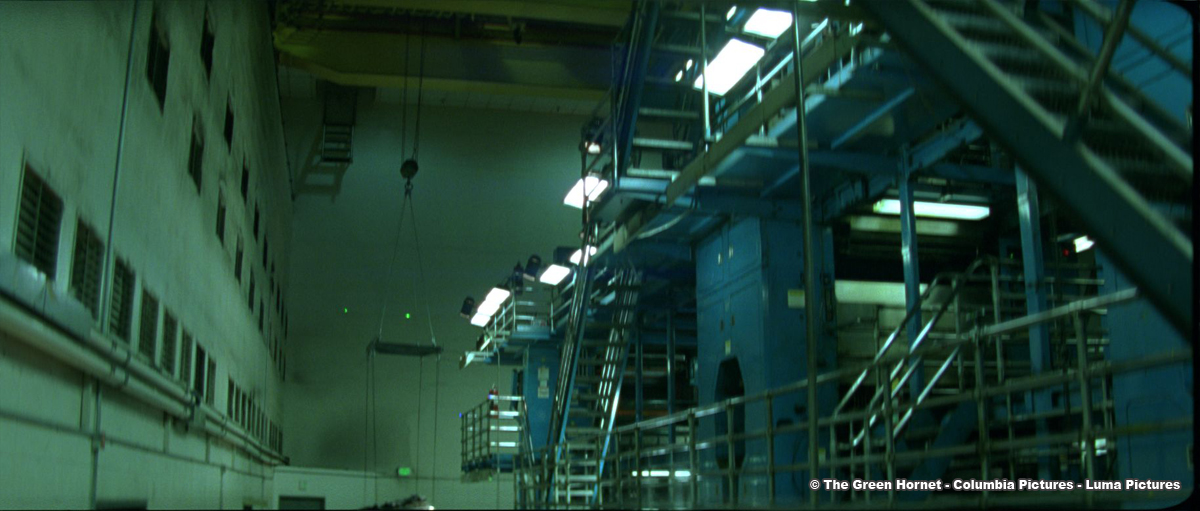 |
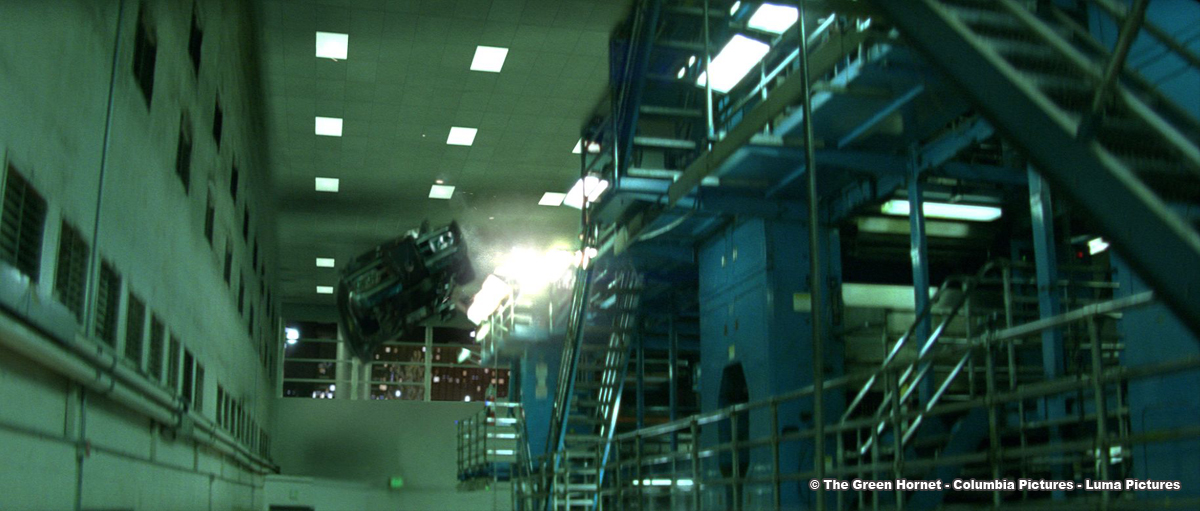 |
How did you recreate the environment of the printing press?
Vincent Cirelli (Visual Effects Supervisor) // At first we were going to use texture stills for reference and build it out using low-res geometry, but it ended up being easier to build it out completely because we had already built out one section for the close up shots. So we simply took that high-res close up and duplicated it for the rest of the scene, then lit it properly for camera.”
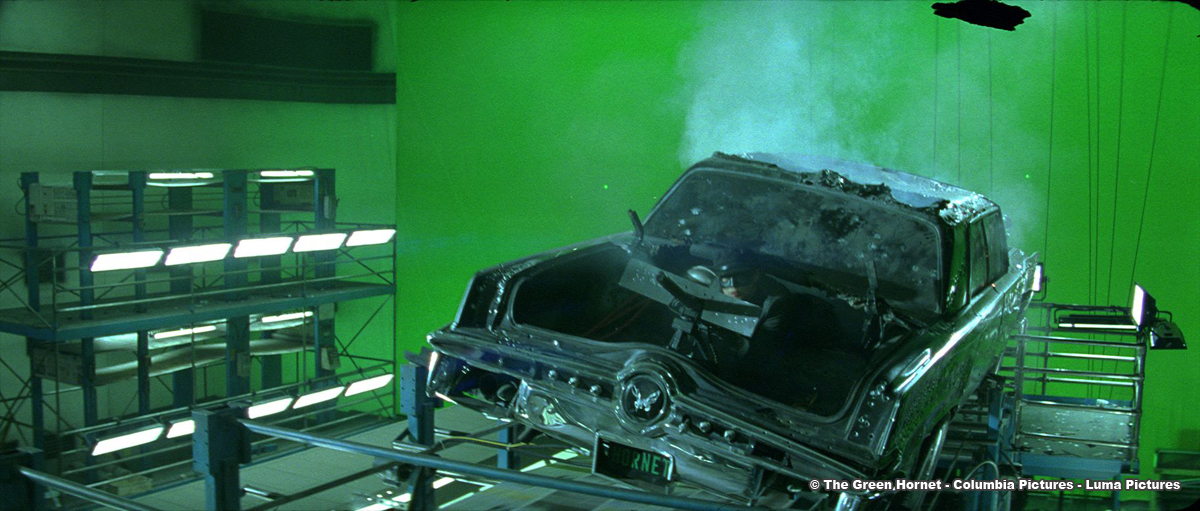 |
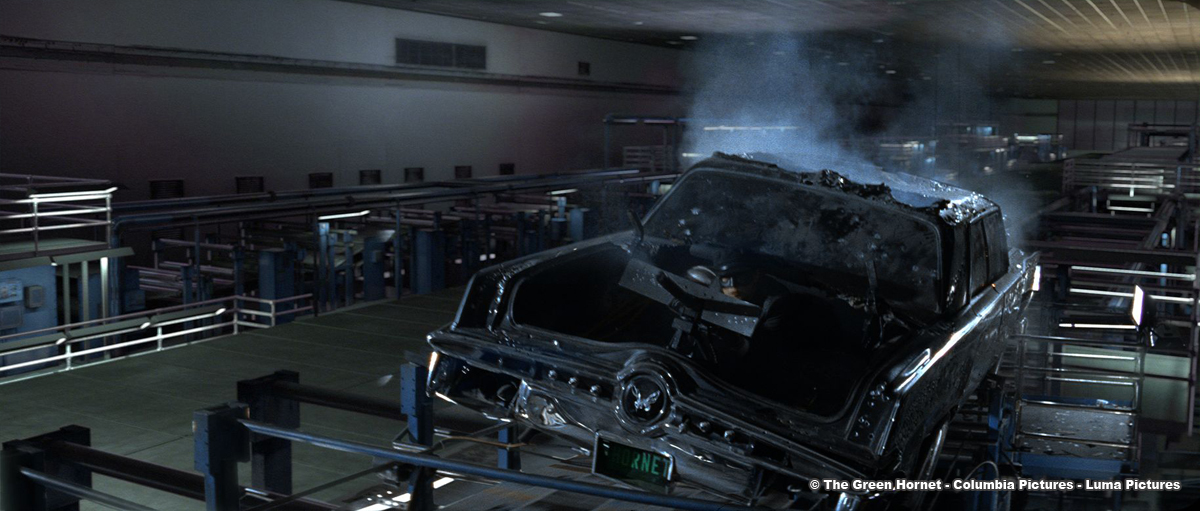 |
Can you explain to us how you create the shots when the heroes throw the Black Beauty into the void and escape with ejection seats? Were there full CG shots?
Richard Sutherland (CG Supervisor) // Some shots were full CG, others were plates that were shot on set projected onto geometry and either rendered or brought into Nuke. Part of the challenge was keeping the continuity of how far up in the air the characters were and what direction they were facing at any given time. Once that was broken down, we could then proceed to place the backgrounds behind the green screen footage of the actors that was shot knowing full what part of the digital set would be placed in each of the shots.
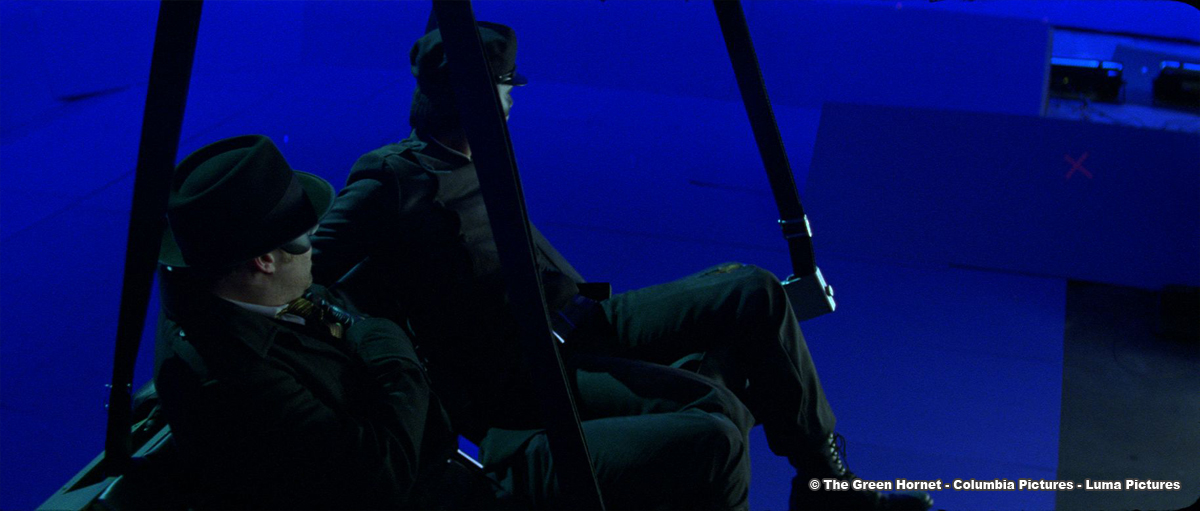 |
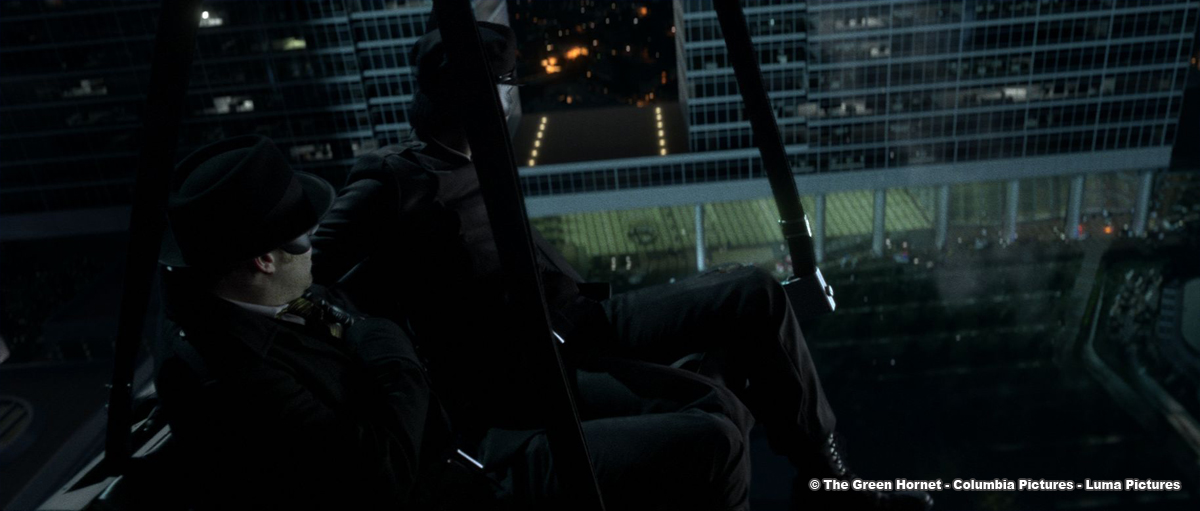 |
To get full resolution imagery for that section of the city, a couple of us actually went to the location that this sequence was shot long after the shooting was over to take photographs from the top floor. Then we stitched together these photos and used in them in the composites as backgrounds.
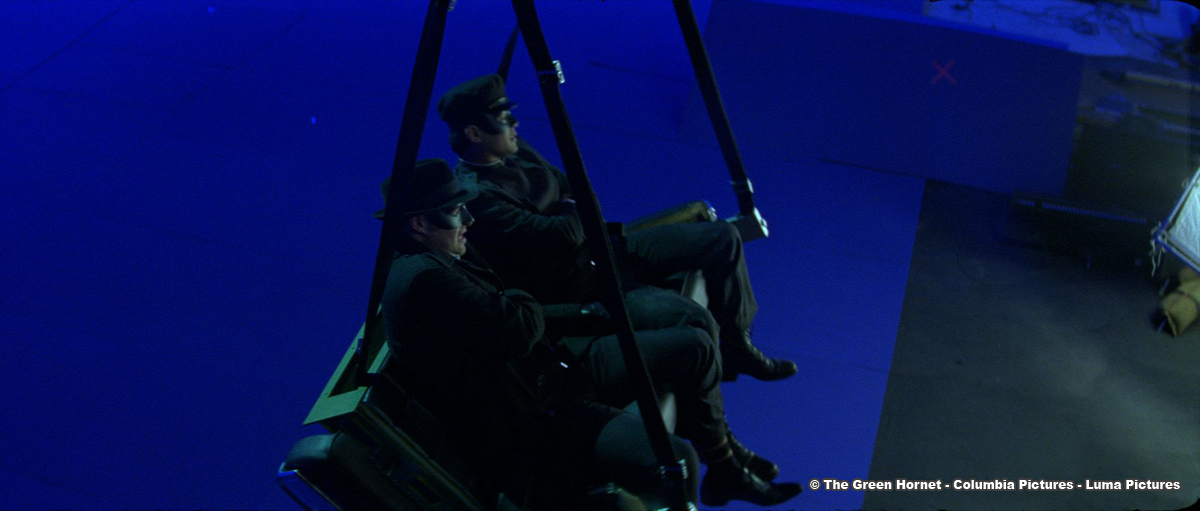 |
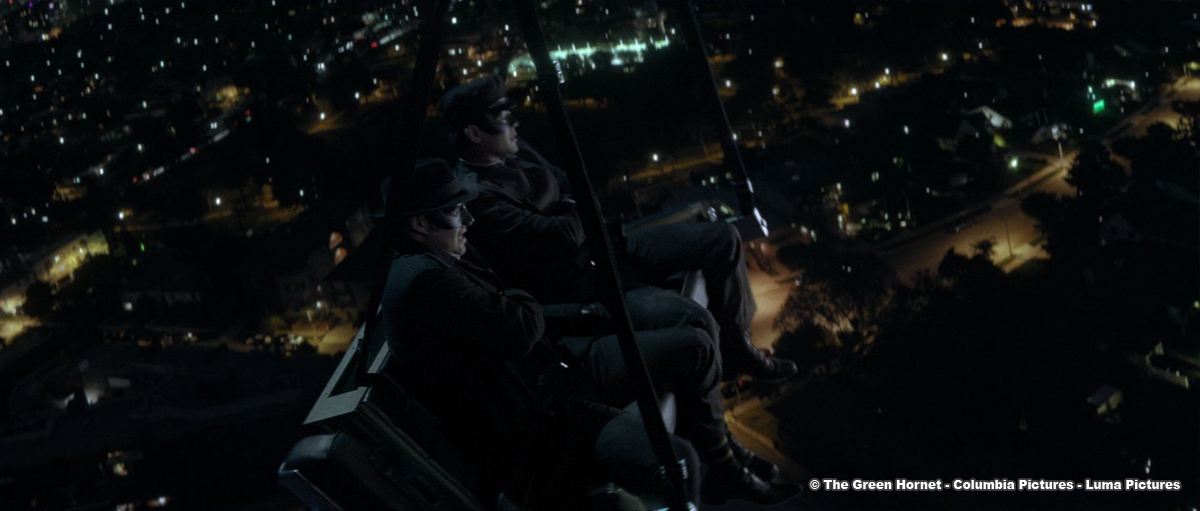 |
Did you use digital doubles for your sequences?
Vincent Cirelli (Visual Effects Supervisor) // Yes, there were a few shots in this and other sequences that required us to build photo real digital doubles of the actors.
Did you developed specific tools for this movie?
Vincent Cirelli (Visual Effects Supervisor) // Some new methods were used. A brand new car paint shader was developed to get a realistic deep sheen on the Black Beauty that would totally match the reference that we had of the car in the environment.
What is your pipeline and your software at Luma Pictures?
Vincent Cirelli (Visual Effects Supervisor) // We’ve got a number of integrated tools:
“The Nexus” – breaks CG renders into multiple layers so that the compositors have more control
we have tools integrated in Nuke that bring in these multiple layers and parse them out in a manageable way.
“Big Brother” – is our tracking software created in-house and enables our supervisors and coordinators keep track of artists tasks and adjust the schedule for any given show on the fly.
For the most part we use Maya and Nuke, with a few other sets of proprietary tools built with Python and other specialized off the shelf software.”
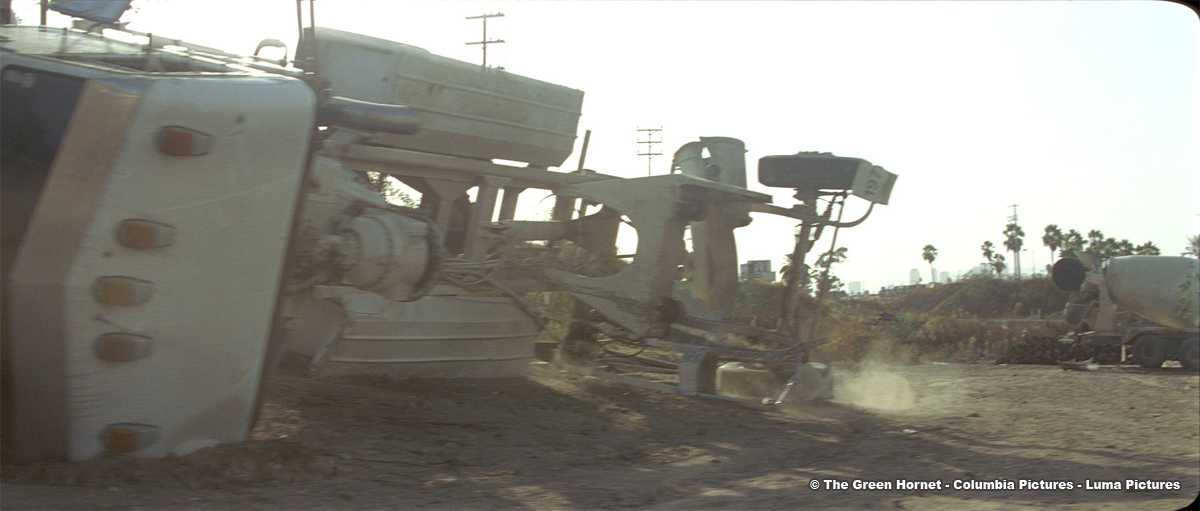 |
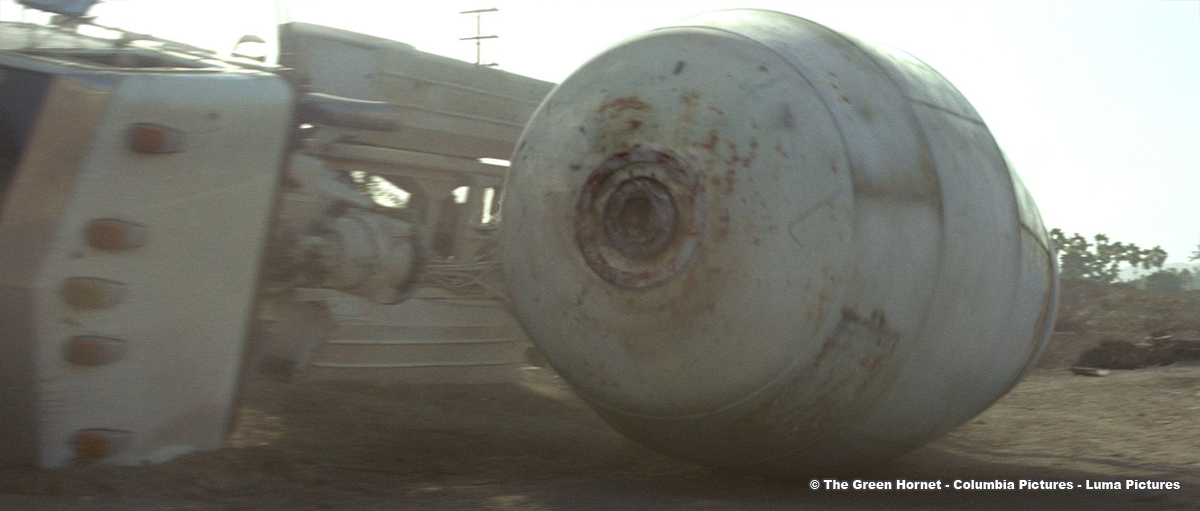 |
What was the size of your team?
Steve Griffith (Visual Effects Producer) // It took about 70 artists, supervisors, and coordinators over the course of 8 months.
What is your next project?
Luma is currently in production on THOR, X-MEN: FIRST CLASS, FRIGHT NIGHT and NOW.
A big thanks for your time.
// WANT TO KNOW MORE ?
– Luma Pictures: Official website of Luma Pictures.
– fxguide: THE GREEN HORNET article on fxguide.
© Vincent Frei – The Art of VFX – 2011





Awesome post. Thanks for sharing!